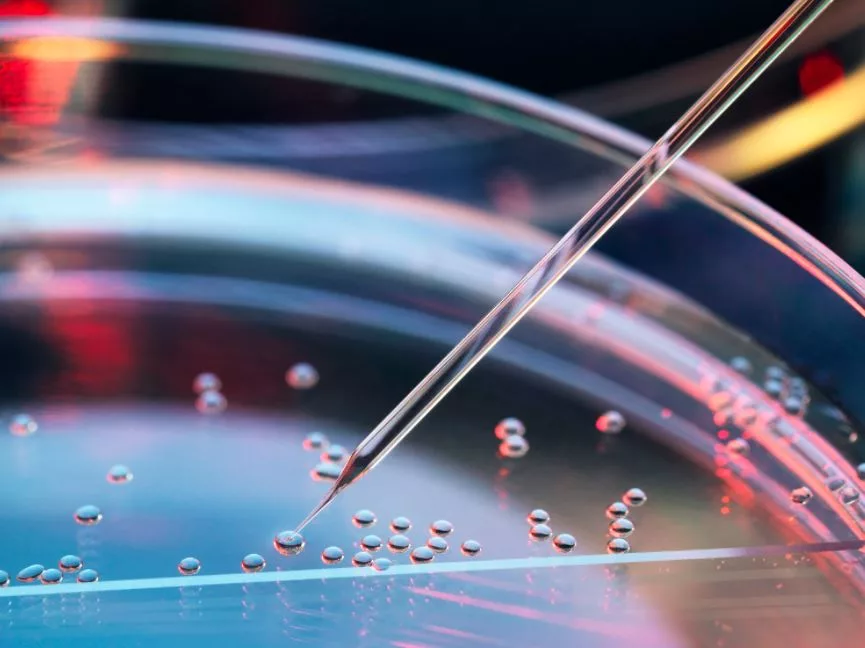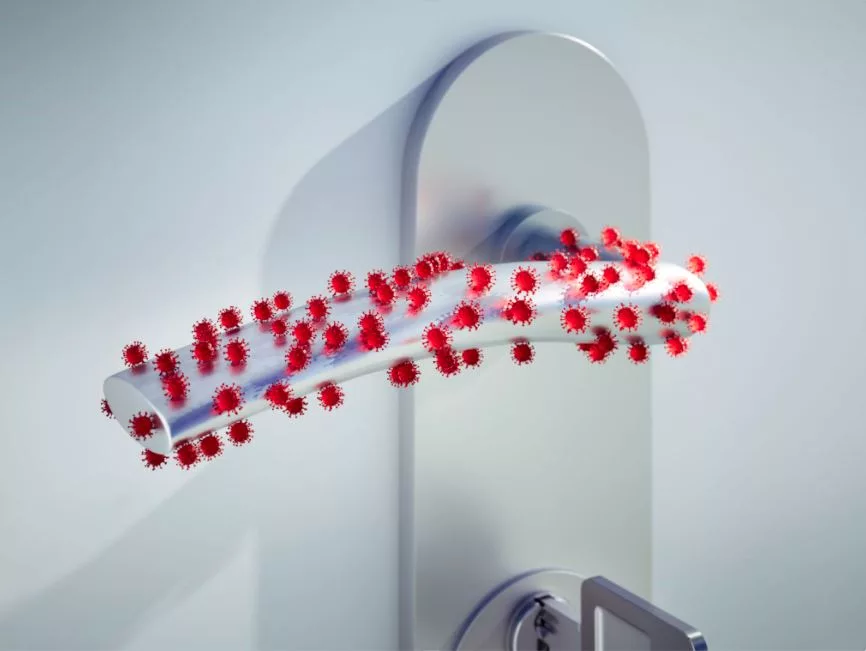
Maintaining a pristine and secure environment for our customers is a top priority for businesses. To accomplish this, we employ various techniques to assess microbial contamination, such as ATP tests. But what exactly is involved in this type of testing? What are the scientific principles that underpin it?
This article delves into the science behind ATP testing and how they aid in determining the extent of germs present in our surroundings.
Benefits of ATP Meter Testing
ATP (adenosine triphosphate) measurements play a crucial role in detecting the presence of living cells, including microbial ATP. The amount of ATP present, expressed in relative light units (RLU), is directly proportional to the number of microorganisms in a sample. ATP swabs are specifically designed to collect and measure naturally occurring ATP, providing accurate and traceable verification of cleanliness.
How Are ATP Tests Performed?
ATP tests involve using ATP test swabs to sample surfaces and detect any residual ATP, which indicates the presence of germs or contamination. These ATP swabs are then inserted into a luminometer, a device that measures the light emitted from the reaction between ATP and specific enzymes. The resulting ATP test results are presented in relative light units, offering a quantifiable measure of cleanliness.
By implementing regular ATP tests, businesses can monitor the effectiveness of their cleaning procedures and make necessary adjustments to ensure optimal hygiene. This process allows for accurate and traceable verification of the sanitary conditions within a facility, safeguarding both customers and employees.
Accurate and Fast Results
One of the most significant benefits of ATP meter testing is the speed and accuracy with which results can be obtained. With traditional methods, it can take up to several days to get the results of bacterial cultures. However, ATP meter testing can give the results in minutes. This means that corrective measures can be taken promptly to prevent the spread of infections or diseases.
Targeted Cleaning Efforts
ATP meter testing allows for targeted cleaning efforts, which means that cleaning staff can focus on areas with a higher presence of organic matter. This is not only a more efficient way of cleaning, but it also ensures that areas with the highest risk are prioritized. By using the data obtained from ATP meter testing, cleaning schedules can also be adjusted, allowing for more frequent cleaning of high-risk areas.
Maintains a Safer and Healthier Environment
By implementing ATP meter testing into your routine cleaning regimen, you can maintain a safer and healthier environment. This is because organic matter can harbor bacteria and viruses that are harmful to humans, especially those with weakened immune systems.
By reducing the presence of organic matter on surfaces, you can reduce the risk of infections, diseases, and outbreaks. Common Sense surface protectant is an antimicrobial solution that destroys 99% of germs on contact. The formula bonds to surfaces to provide long lasting effects. Find out more about how our formula works.
Peace of Mind
In addition to all the benefits we have listed, ATP meter testing provides peace of mind. It is reassuring to know that measures are being taken to ensure the cleanliness of your facility.

This not only gives you confidence in your facility but also instills confidence in your staff and customers. This is especially important in high-risk industries such as healthcare and food service.
How ATP Meter Testing Works
Utilizing ATP meter testing is a crucial method for guaranteeing a sanitary and uncontaminated environment, free from harmful pathogens. This technique measures the quantity of adenosine triphosphate (ATP) within a sample, which serves as an indicator of the surface’s overall cleanliness and hygiene. A handheld ATP meter initiates a reaction between a luciferin-luciferase enzyme and ATP, generating light that can be quantified to assess the cleanliness level.
ATP meter testing is not only fast and user-friendly but also offers an unbiased evaluation of surface cleanliness, making it a vital component of any environmental monitoring program. By frequently testing and observing surfaces, potential health risks can be pinpointed and tackled in a timely manner, ensuring a secure and hygienic environment.
Free ATP and Total ATP: Understanding the Fundamentals
When it comes to assessing the cleanliness and hygiene of surfaces, the use of adenosine triphosphate (ATP) meter testing has become an invaluable tool for many industries. ATP is an energy molecule found in all living cells, including bacteria, viruses, fungi, and even human cells.
By measuring ATP levels on surfaces, we can gain insights into the presence of organic matter and microbial contamination. Two key parameters in ATP testing are Free ATP and Total ATP. Here are the fundamentals of Free ATP and Total ATP and their significance in assessing germ contamination levels accurately.
Free ATP:
Free ATP refers to the ATP that is readily available and accessible for measurement in a sample. It represents the ATP present in solution or loosely attached to surfaces. Free ATP is typically detected using a swab or sampling device, which is then placed in contact with a specialized ATP meter. This meter measures the amount of light emitted when ATP reacts with a luciferin-luciferase reagent, providing a quantitative assessment of the sample’s cleanliness.
Total ATP:
Total ATP, on the other hand, encompasses both Free ATP and the ATP bound to particulate matter, such as dust, debris, and microorganisms. This bound ATP is not immediately available for detection using conventional ATP meters. Instead, it requires additional sample processing steps to release the bound ATP before it can be measured accurately.
Importance of Free ATP and Total ATP:
Differentiating between Free ATP and Total ATP is crucial in understanding the nature of germ contamination on surfaces. Free ATP provides an immediate assessment of the presence of microbial contamination that can potentially spread infectious agents. It gives a snapshot of the cleanliness of a surface at a given moment, as it measures the ATP actively being shed or present on the surface.
Total ATP, on the other hand, provides a more comprehensive evaluation of the overall microbial burden. It includes ATP that is both readily accessible and bound to particulate matter.
By considering Total ATP levels, we gain insights into the potential reservoirs of microbial contamination, such as dust, dirt, or biofilms that may contribute to the persistence of germs over time. Evaluating Total ATP helps identify areas that require thorough cleaning and disinfection, even if they may appear visually clean.
Using Free ATP and Total ATP in Combination:
While Free ATP and Total ATP provide valuable information individually, combining these measurements offers a more complete picture of surface cleanliness. By comparing Free ATP levels to Total ATP, we can assess the proportion of ATP bound to particulate matter.
This ratio can help determine if the microbial contamination is primarily surface-related or if it is embedded in the environment. This knowledge allows us to develop targeted cleaning and disinfection strategies to effectively reduce germ contamination and minimize the risk of infection transmission.
ATP meter testing, with its ability to measure both Free ATP and Total ATP, has revolutionized the way we assess germ contamination on surfaces. By understanding the distinction between Free ATP and Total ATP and utilizing them in combination, we can make informed decisions regarding the cleanliness and hygiene of our environments. These measurements aid in developing proactive strategies to reduce microbial contamination, enhance disinfection protocols, and promote safer, healthier spaces for everyone.

Hospitals and healthcare facilities are central to the provision of medical services in the community. As such, the hygiene and cleanliness of hospitals should be top-notch to prevent the spread of infections and diseases.
ATP meter testing is vital in ensuring that the hygiene of high-touch surfaces and equipment is of acceptable and safe standards. ATP meter testing, therefore, plays a crucial role in maintaining optimal cleanliness which is directly related to infection and disease control in these facilities.
Food processing and manufacturing plants
Food processing and manufacturing plants present a high risk of contamination to consumers. The very process of handling and packaging food introduces opportunities for germs and microbes to thrive. ATP meter testing helps to verify that the surfaces, instruments, and areas used to process food are clean and free of harmful microbes.
Schools and universities
Schools and university campuses are high-traffic areas with hundreds or even thousands of people passing through daily. Given the close proximity of a large number of people, it is essential to ensure that the surfaces, classrooms, and other areas are clean and free of disease-causing germs. ATP meter testing can help in the monitoring of hygiene standards for the benefit of teachers, students, and other stakeholders.
Gyms and fitness centers
One of the most crucial benefits of going to the gym is to effectively stay in shape and lead a healthy lifestyle. Unfortunately, gyms present a high risk of contracting diseases due to the shared use of workout equipment and facilities. ATP meter testing is essential in ensuring that gym equipment, locker rooms, and other shared surfaces are clean and reduce the risk of contracting diseases.
Any high-traffic areas with a high risk of contamination
Lastly, ATP meter testing should be used in any high-traffic areas with a high probability of contamination. This could include airports, malls, public transportation hubs, hotels, and any other areas where a lot of people pass through.
The Right ATP Meter
In the world of industrial cleaning and sanitation, ATP meters are a key tool for assessing cleanliness levels. Several factors should be considered when selecting the type of meter to use to ensure reliable and accurate results. These can include the sensitivity of the device, its ease of use, and compatibility with your industry’s cleaning protocols.
It’s also important to compare the different types of ATP meters available, including luminometers and bio luminometers, to determine which best suits your needs. With careful consideration and research, choosing the right ATP meter can greatly enhance your cleaning processes and ensure a safe environment for all.
Final Thoughts About ATP Testing
ATP meter testing is a key tool in ensuring cleanliness and preventing the spread of infections and diseases. Whether it’s used in hospitals, food processing plants, schools, gyms, or any other high-traffic area with a risk of contamination, choosing the right ATP meter for your needs can be beneficial to both you and those around you. ATP testing is simply the best method to understand if your cleaning procedures are effective.

